Dear traveler, we may get commissions from your reservations made through links in this article, at no extra cost to you. This helps keep the site running and free for all. Thank you!
Last Updated on March 22, 2024
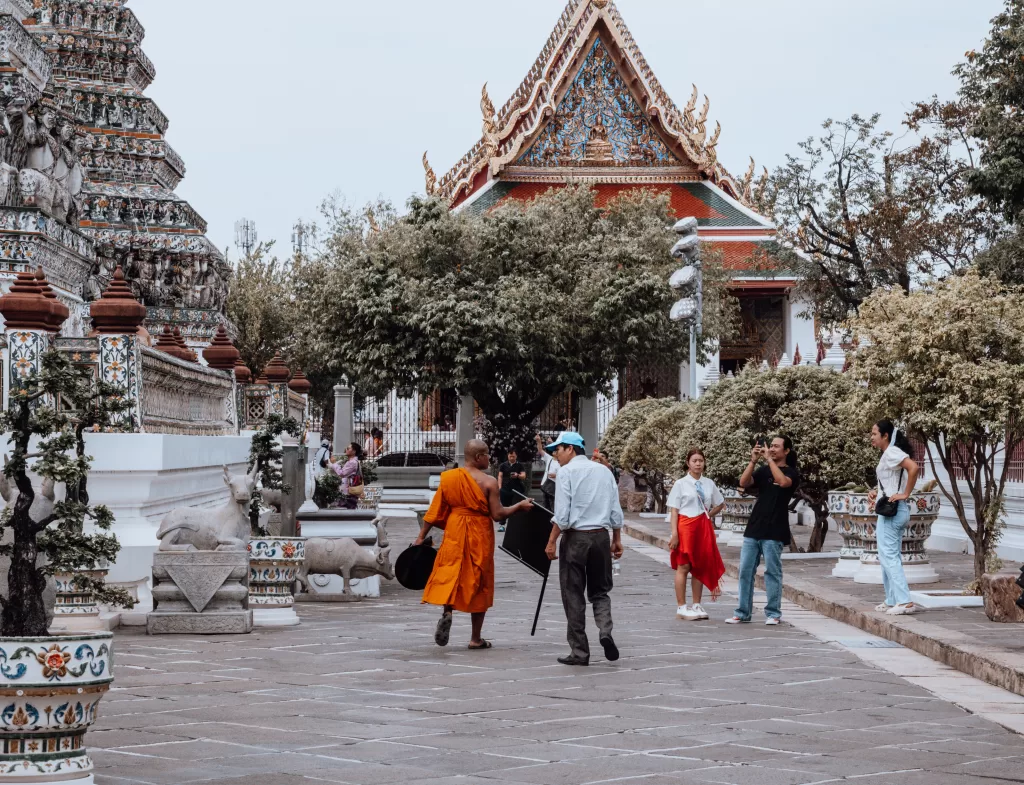
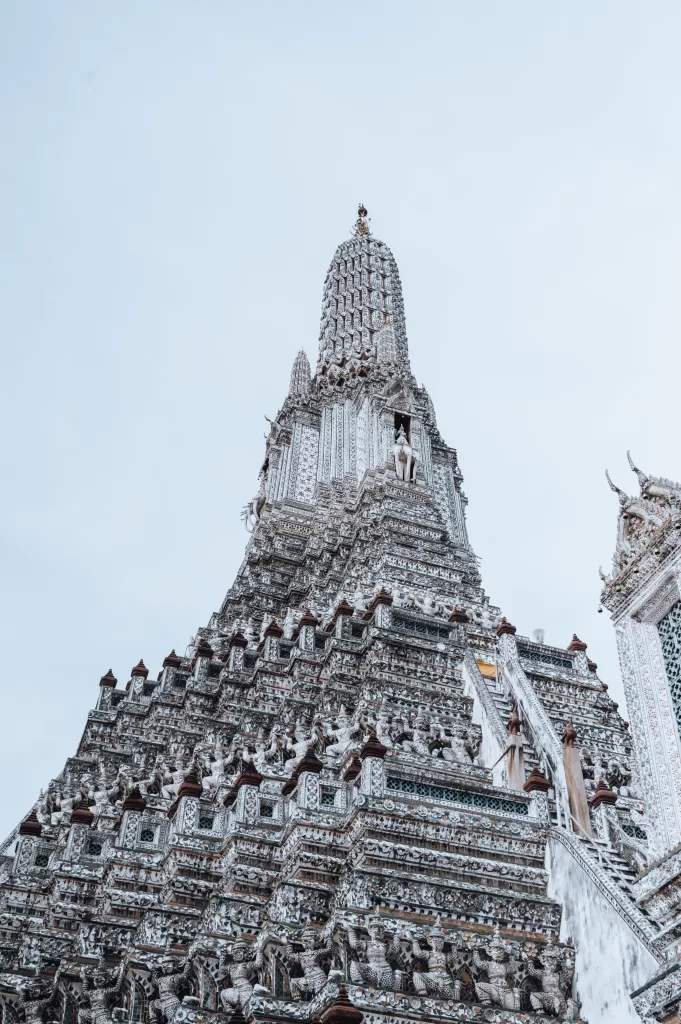
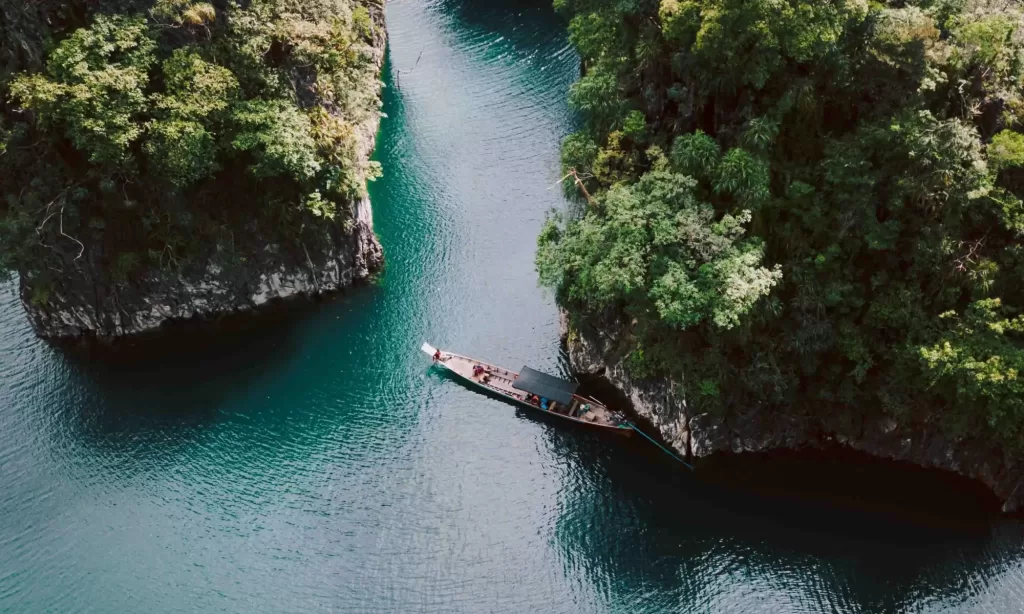
When we decided to visit Thailand we were not expecting it to become one of our favorite places we visited so far. We spent two weeks traveling from North to South, visited some of the most famous places and also some hidden gems that you might not have heard of. So in this guide we’ll share our itinerary, the places we visited and as a bonus we’ll also share some cool photo spots! If you only have 10 days for Thailand, some of the day trips we did are optional, so you can still have a great time in Thailand and experience both North and South region.
This itinerary includes a visit to the Wildlife Friends Foundation in Thailand. We highly encourage you to visit an ethical wildlife sanctuary – if you choose not to visit WFFT you can also add an extra day in Chiang Mai and visit a sanctuary based there. Please be mindful when booking wildlife experiences and choose the sanctuary wisely. Elephant riding and bathing are not considered ethical activities, so you should avoid sanctuaries that promote these types of activity. Also, look for sanctuaries that have a no touching policy. Fore more tips, check our ethical wildlife experiences guide.
Note: This is a mid-budget guide. Some of the tours we did were private, but you can do it in smaller groups at a lower cost.
Thailand Itinerary Map
Itinerary (10 to 14 days)
Day 1
- Arrive in Bangkok, the capital city
- Night in Bangkok
Day 2
- Explore Bangkok
- Night in Bangkok
Day 3
- Continue to explore Bangkok
- Night in Bangkok
Day 4 (optional, for the 10 day itinerary travel to Chiang Rai)
- Visit Ethic Wildlife Sanctuary
- Night in Bangkok
Day 5 (optional, for the 10 day itinerary travel to Chiang Rai)
- Day trip Ayutthaya
- Night in Bangkok
Day 6
- Arrive in Chiang Rai
- Full day visit Chiang Rai
- Night in Chiang Rai
Day 7
- Drive to Chiang Mai
- Visit Chiang Mai
- Night in Chiang Mai
Day 8
- Morning visit in Chiang Mai
- Drive to Khao Sok National Park
- Night in Khao Sok
Day 9
- Day tour in Khao Sok National Park
- Drive to Phuket
- Night in Phuket
Day 10
- Visit Phi Phi islands
- Travel to Koh Yao Noi
- Night in Koh Yao Noi
Day 11
- Boat tour to Koh Hong
- Continue the visit to Koh Yao Noi
- Night in Koh Yao Noi
Day 12 (optional, for the 10 day itinerary travel to Chiang Rai)
- Travel to Naka Island and enjoy some rest
- Night in Naka Islanad
Day 13 (optional, for the 10 day itinerary travel to Chiang Rai)
- Relaxing in Naka
- Start the journey back home
Day 14
- Flying back home
Detailed Thailand 2 Weeks Guide
Days 1, 2 & 3: Arrival and Visiting the Capital of Bangkok
Bangkok is such an interesting city because you see a mix between tradition, spirituality and urban life. You have hundreds of temples nestled in the middle of busy streets and it just adds a special charm to the city.
It is a huge city, with a lot of things to do and explore, we want to share some of the highlights of what we did and if you want a more detailed guide please check our Bangkok Guide.
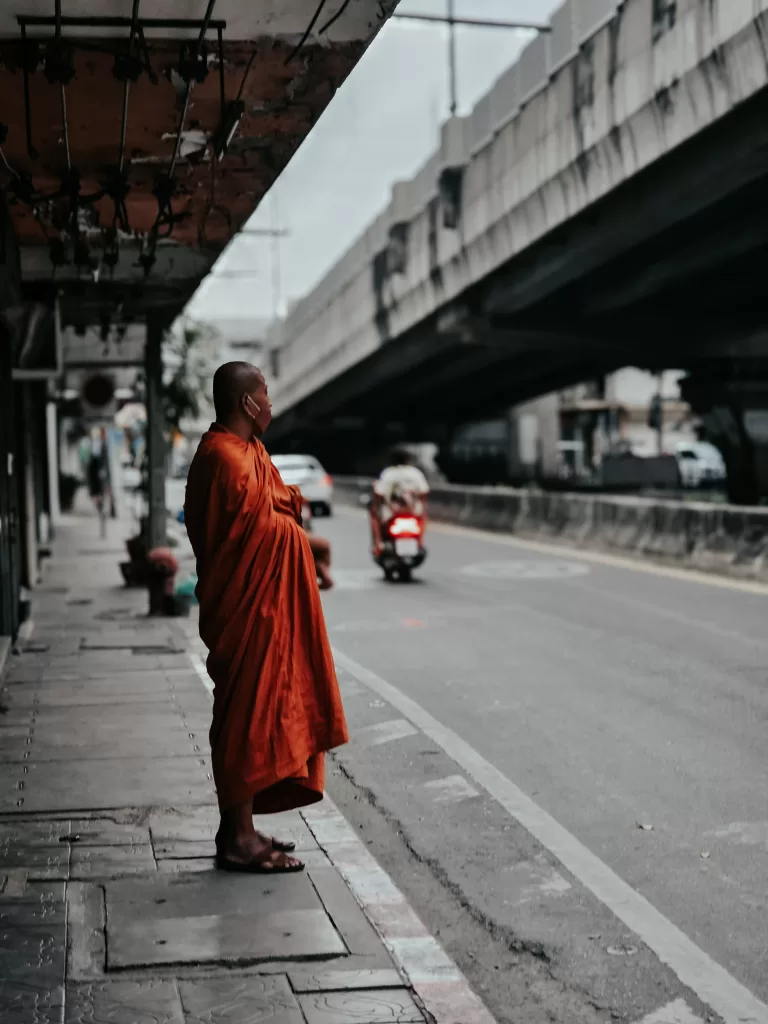
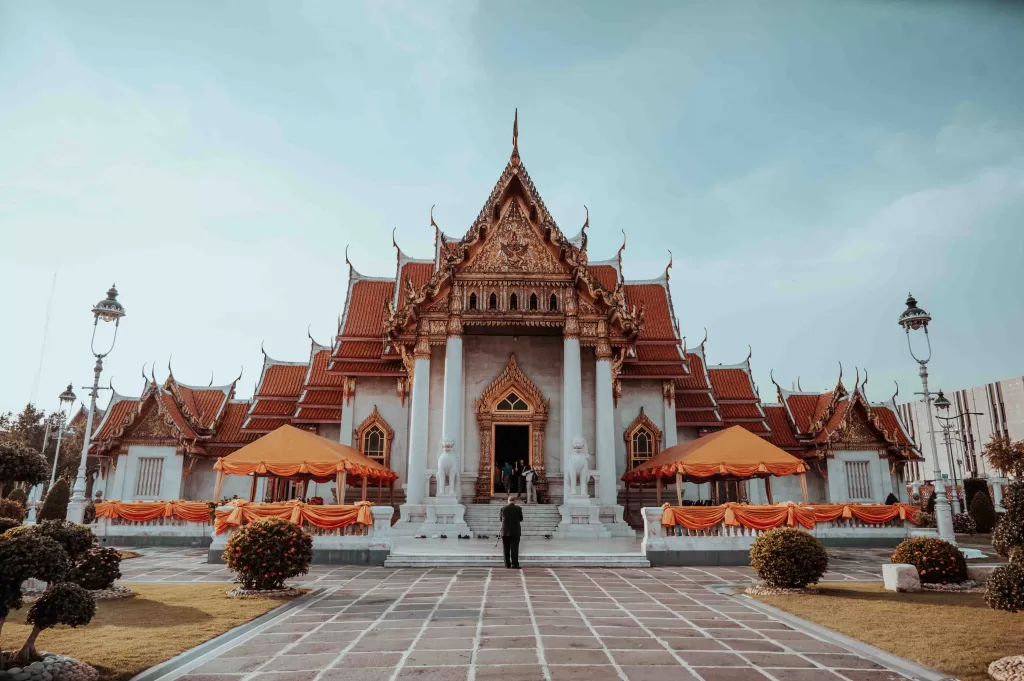
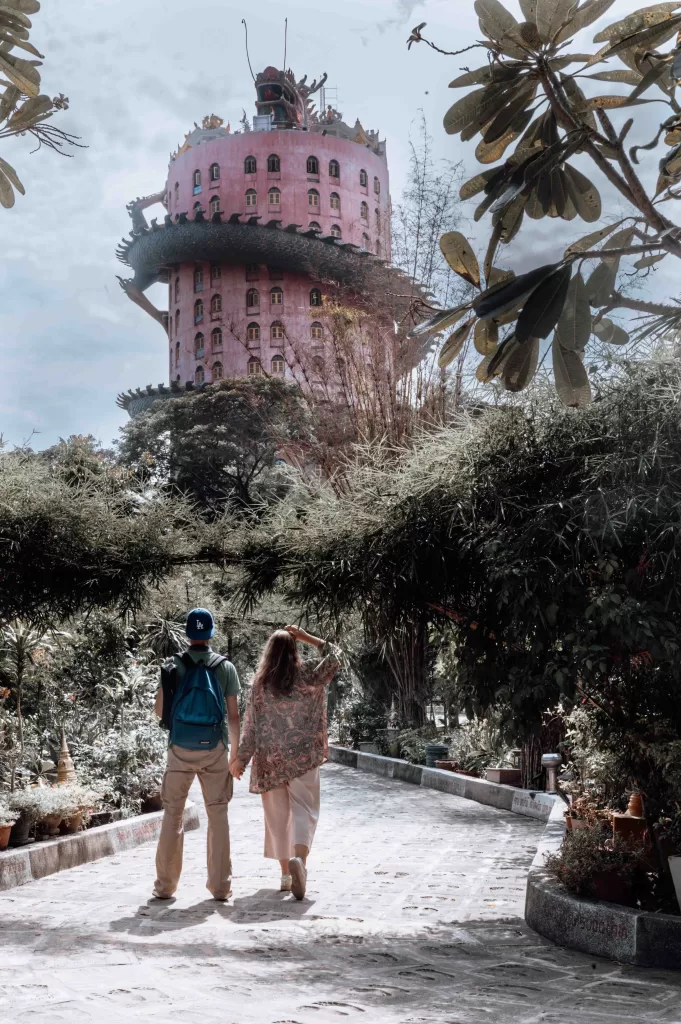
Day 4: Supporting Conservation Efforts by Visiting an Ethical Wildlife Sanctuary (optional, for the 10 day itinerary travel to Chiang Rai)
One of our biggest passions is wildlife. When we travel, we are deeply committed to supporting local NGOs that work tirelessly to protect and preserve wildlife wherever we go.
Just to give you an example, at the beginning of the 20th Century there were an estimated 100,000 wild tigers in Asia. This number is now estimated at fewer than 4,000, of which an approximately 200-250 are in Thailand. Besides the existing pressures on native species like tigers, elephants and bears, Thailand also plays a significant role in the global trade of wildlife and wildlife products. Thailand is a major source, transit and destination country for many different types of wildlife and wildlife products.
That is why we feel it is important to support the people who are part of the change happening in the country. In order to visit a wildlife sanctuary, you need to check a few things first to ensure an ethical experience – you can read our Ethical Wildlife Experiences guide for detailed information on this topic.
We decided to visit the Wildlife Friends Thailand Foundation and did a day tour from Bangkok. We decided to visit the Wildlife Friends Thailand Foundation and took a day tour from Bangkok. Here, you’ll encounter a wide array of animals that have been rescued from heartbreaking situations – gibbons, elephants, tigers, moon bears, and many others. Most of them were previously kept as pets or exploited for tourism. While we were able to see that the animals are well taken care of, there was one situation that we found unnecessary. Visitors are given the opportunity to feed the elephants (without touching them). We emailed the sanctuary, emphasizing our concerns regarding the activity, as we felt it was unnecessary and perpetuated the idea that animals should be subject to human interaction for entertainment purposes.
If you need help deciding what sanctuary to visit in Thailand, please check The Call to Conserve resources.
We went back to Bangkok for the night.

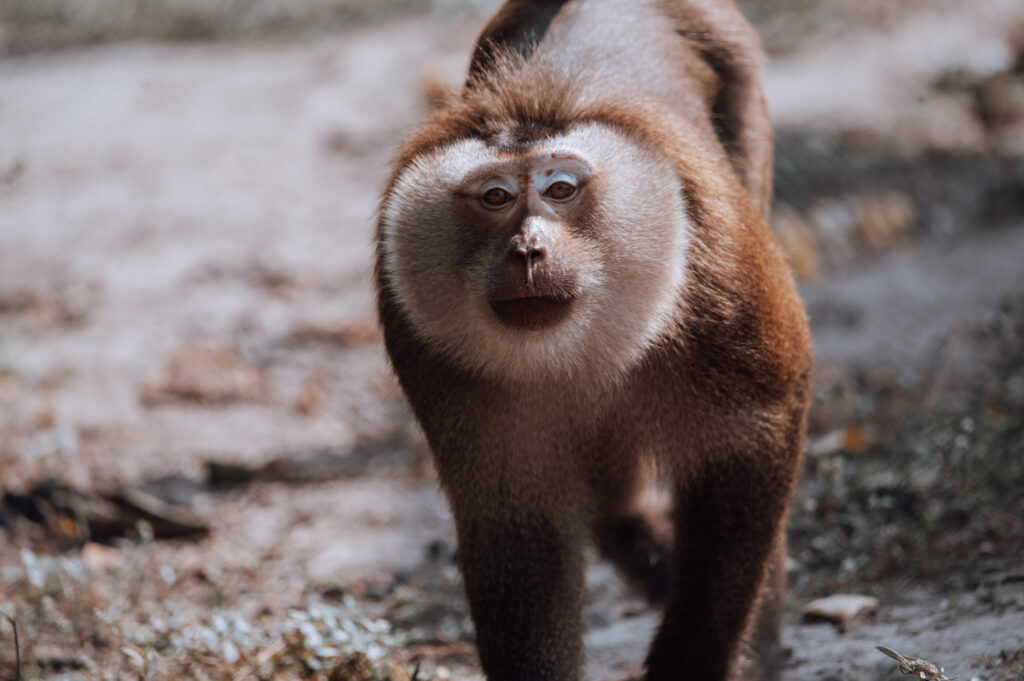
Day 5: Visiting the Ancient City of Ayutthaya (optional, for the 10 day itinerary travel to Chiang Rai)
You can visit Ayutthaya as a day trip from Bangkok. To get to Ayutthaya there are a few options, you can either take a train, a minivan or book a grab. The train takes around 1h and it’s the cheapest option to get to the city. You can book your tickets through 12GoAsia.
Ayutthaya is an interesting place due to its history. It was the second capital of the Siamese Kingdom and was founded in 1350. However, 400 years later it was destroyed during the Burmese War. What stands now are the ruins of what once was an important center of global diplomacy and commerce.
There are a lot of temples you can visit within the old city center, we just wanted to name a few that we felt were definitely worth it:
Highlights:
- Wat Chaiwatthanaram
- Wat Phra Mahathat (there’s a statue of a Buddha head in the middle of a tree!)
- Wat Phra Si Sanphet
- Wat Ratchaburana
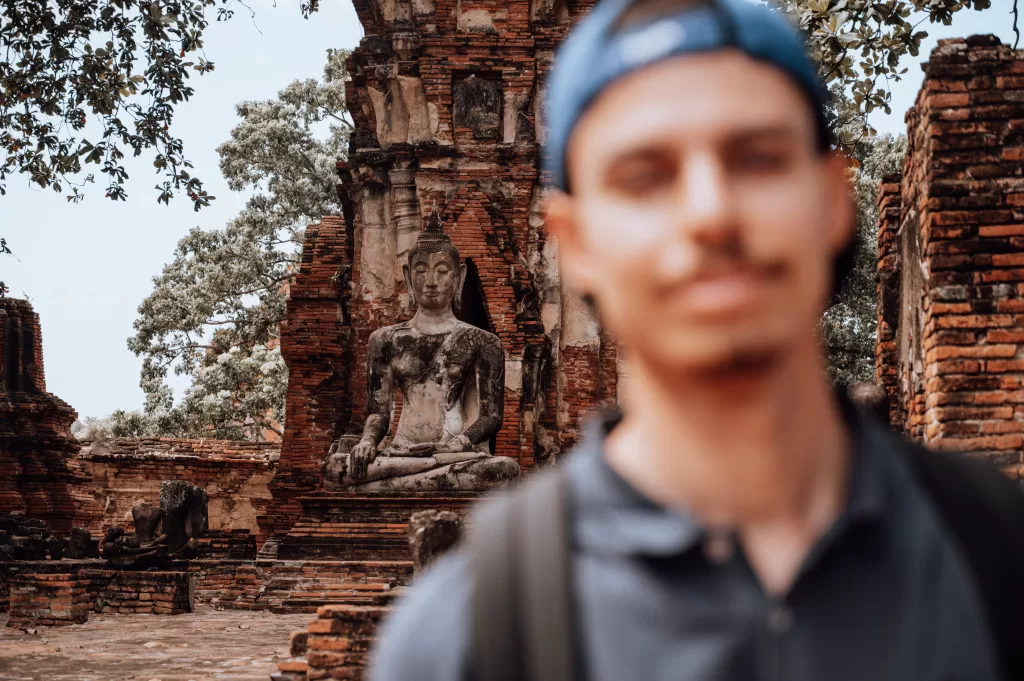
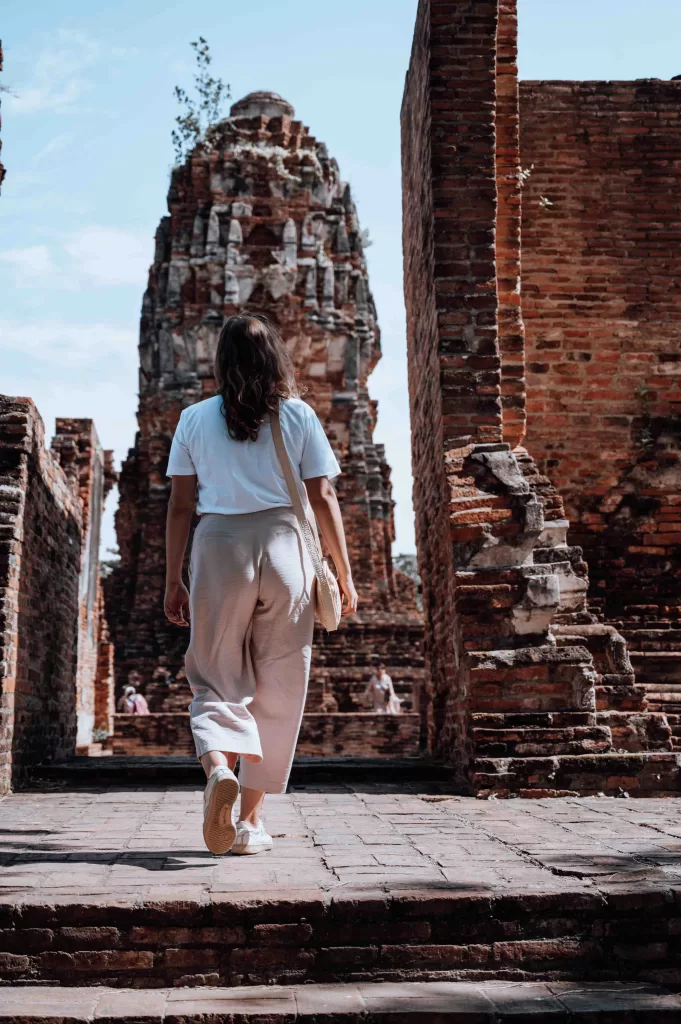
There a few more temples if you have the time to check them all:
- Wat Yai Chaimongkhon
- Wat Phanan Choeng
- Wat Lokayasutharam
To get around Ayutthaya you can either take a tuk-tuk tour, cycle or, like us, walk. If you want to go to further sights, it is advisable that you hire a tuk-tuk. Ayutthaya was one of the few places where we saw people riding elephants – please, when visiting, do not support these types of activities.
We spent the night back in Bangkok.
Day 6: Visiting Chiang Rai
Chiang Rai has a domestic airport but no direct train connection from Bangkok. If you prefer to take the train, it might be better to first visit Chiang Mai and then take the bus to Chiang Rai.
Since we only had one day planned to spend in Chiang Rai, we decided to do a day tour. We found a great tour from a local company called Lanna Culture. Tony, our guide, was one of the best guides we had. He accommodates all your requests, is super knowledgeable and flexible. We loved our time so much we decided to book a tour again with him the following day, when we visited Chiang Mai.
Besides the beautiful temples, one of the highlights was visiting an incredible coffee shop whose owner was from one of the native ethnic groups of Thailand – The Akha People.
Highlights
- White Temple
- Blue Temple
- The Black House
- Wat Phra Kaew
- Wat Huay Pla Kung
- Akha Mino Coffee shop
For a complete itinerary check our Chiang Rai (link coming soon) guide.
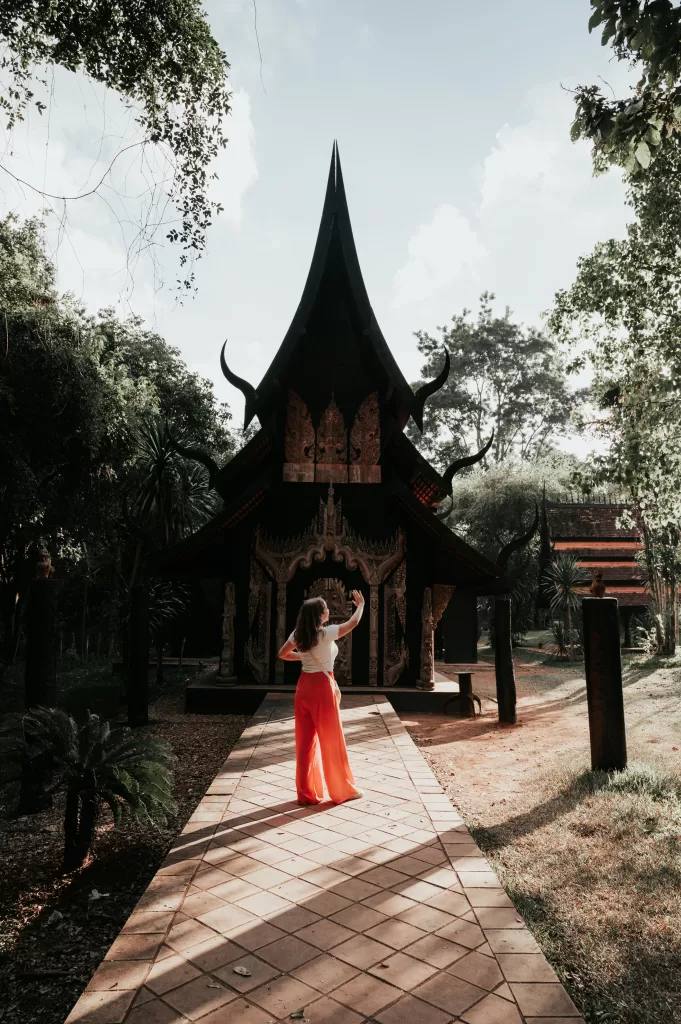
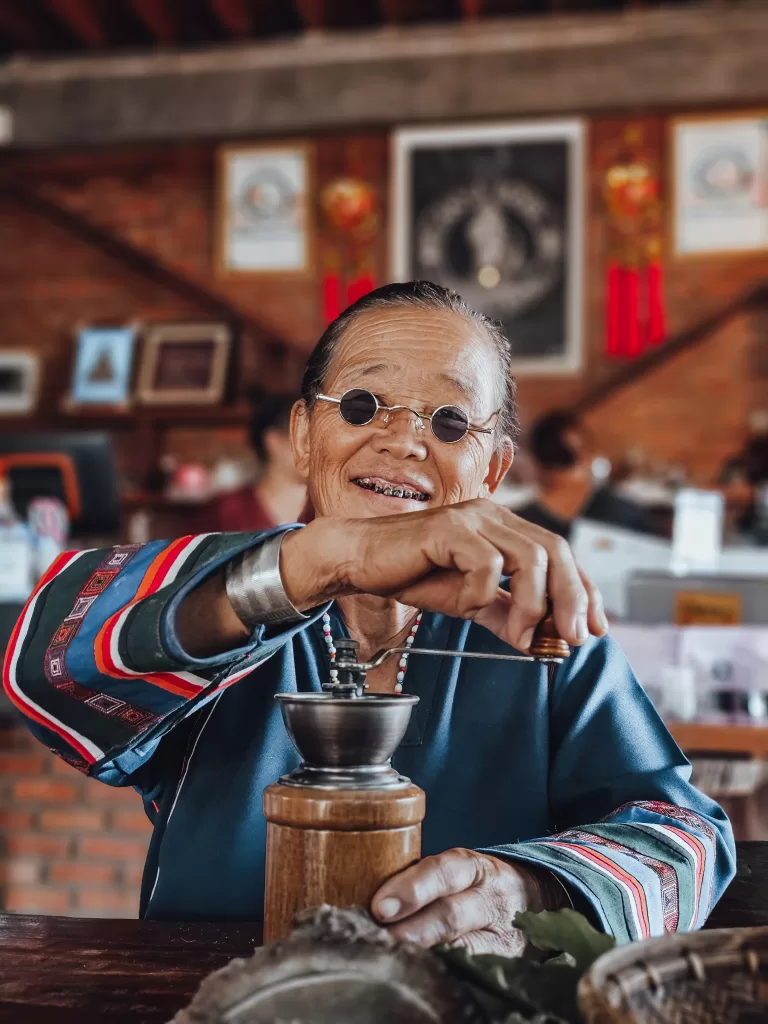
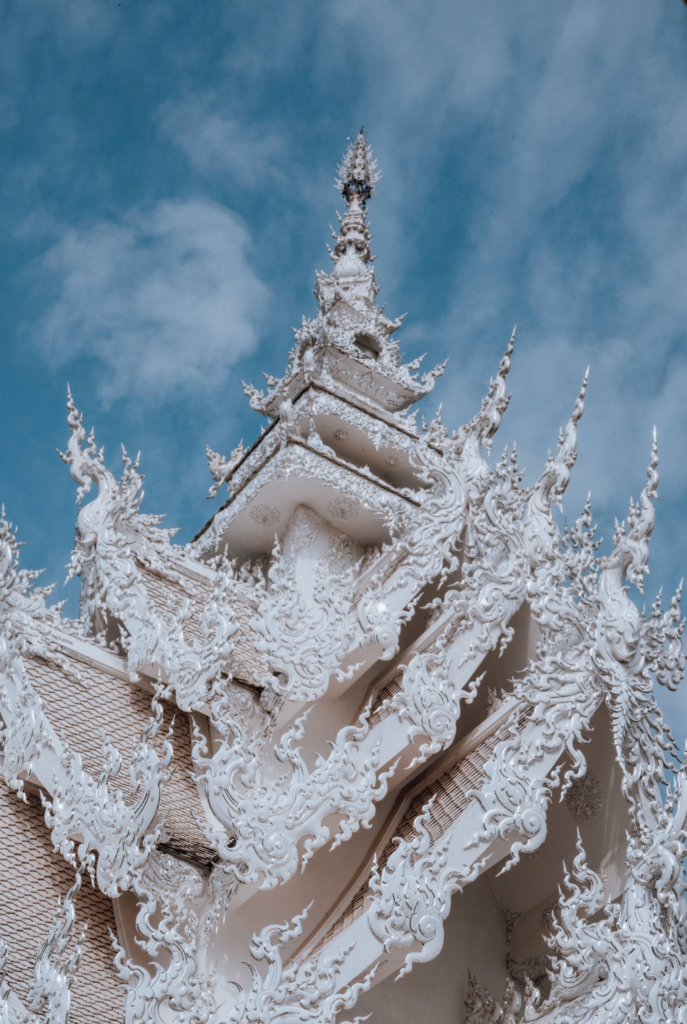
Day 7: Visiting Chiang Mai
As we mentioned, we decided to book a second tour with Tony. He drove us from Chiang Rai to Chiang Mai, but through the mountains – and what a great journey it was. We visit an incredible temple in the middle of a bamboo forest, Doi Chang Buddhist Park, we also visited the cutest coffee shop (that has a homestay that we highly recommend), all this before even arriving to Chiang Mai.
Highlights
- Doi Chang Buddhist Park
- Triple A coffee shop
- Wat Pha Lat
- Doi Suthep
- Wat Phra Singh
- Wat Chedi Luang
- Kaew Gallery
For a complete itinerary check our Chiang Mai (link coming soon) guide.
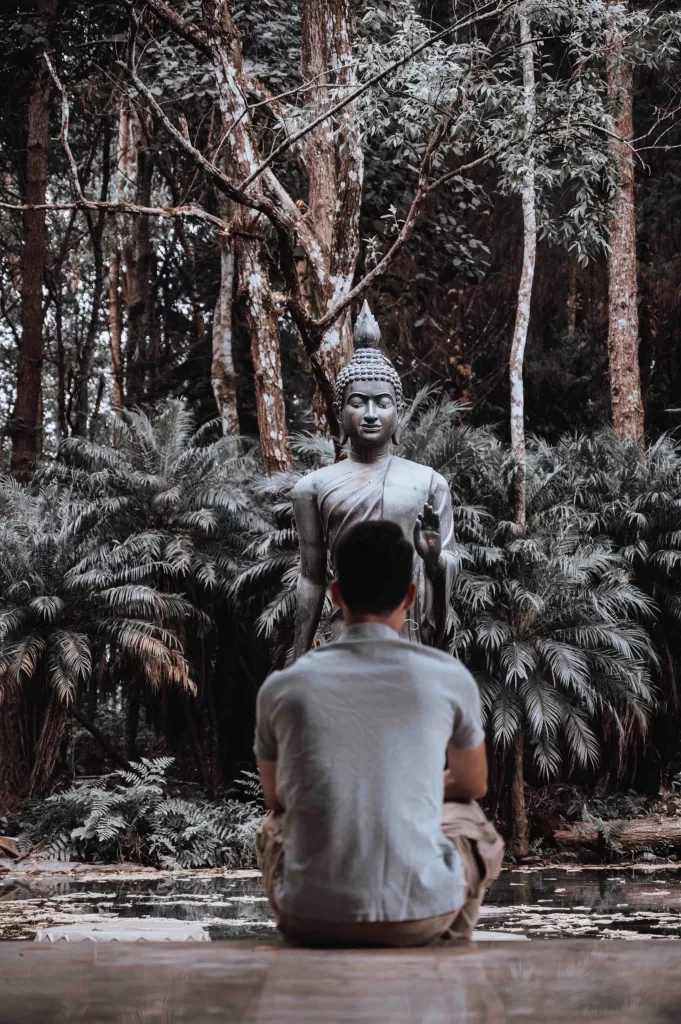
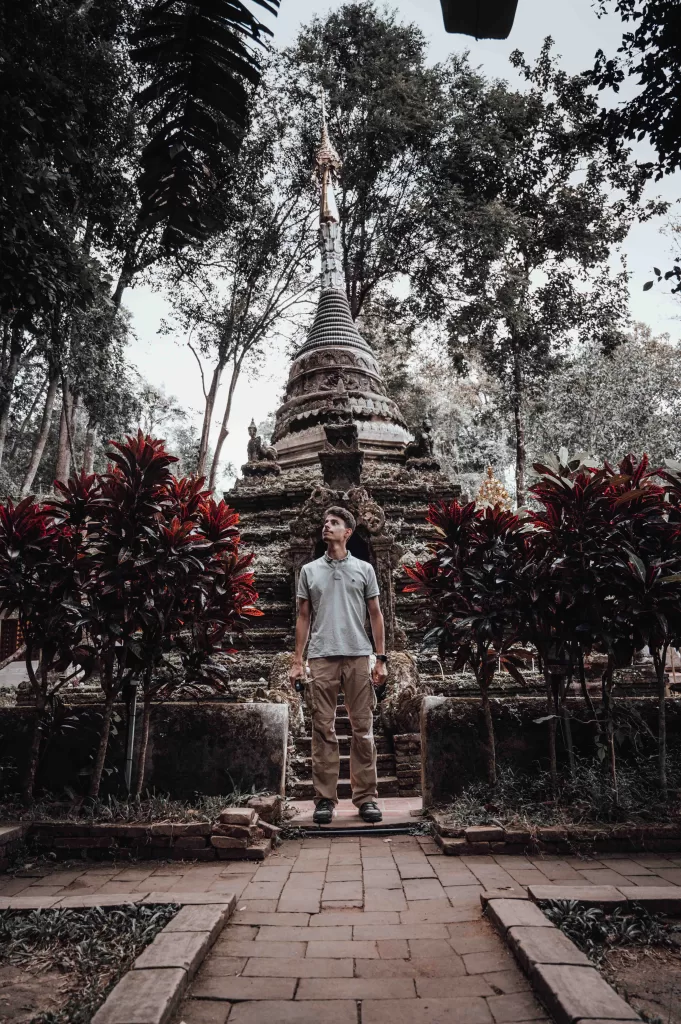
Day 8: Journey to Khao Sok National Park
Khao Sok is one of the largest national parks and it’s a remnant of an ancient rainforest with millions of years. We only spent one day in the park, but we could easily spend 2 to 3 days.
To visit Khao Sok the easiest way is to book a trip directly through your hotel or using a platform like Get Your Guide. You can choose how many days and the budget you want to spend – there are several options available.
On this day we took a flight from Chiang Mai to Phuket and then had a private pickup to the hotel (outside the national park). You can start your journey from different places, like Phuket, Krabi. If coming from Bangkok you can fly or take the train to Surat Thani.
You’ll arrive late to the hotel, so the best thing is just to soak in the views and get some rest for an early rise on the next day.
Check some suggestions for guided tours to Khao Sok below:
Day 9: Khao Sok day tour
Khao Sok is incredible. It’s not too crowded and the landscape is unbelievable. In a day tour you’ll get to the famous Cheow Lan Lake, you’ll do some hiking in the forest, visit some caves if you want and then just enjoy the views and the beautiful nature around you. You can go for a swim and also do some kayaking.
If you stay additional days you’ll be able to explore more parts of the park and even stay at the raft houses in the lake. So if you have the time, we recommend spending the extra night.
The tour will end around 4pm and you can head back to Krabi or Phuket. In our case, we drove back to Phuket.

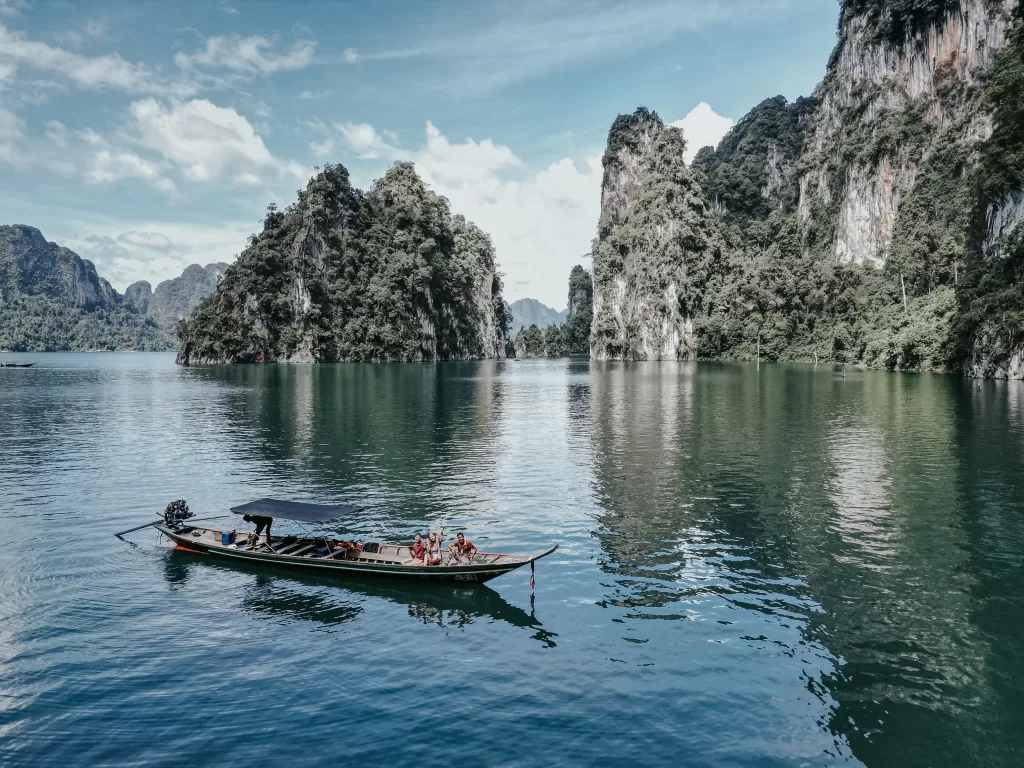
Day 10: Koh Phi Phi sunrise tour and Koh Yao Noi
The famous Koh Phi Phi truly lives up to the hype – it’s such a beautiful set of islands, with turqoise waters and lush green forests. However, when you visit it feels a bit bittersweet. The beauty of the island makes it a top destination and that means over-tourism. There are so many people and boats coming in and out that it just feels a bit too much for such a small ecosystem.
Now, you might be wondering if you should skip Koh Phi Phi and to be honest we think it would be ok to not visit. There are plenty of incredible islands in Thailand and over-tourism was (and still seems to be) a huge problem, especially at Maya Beach.
Also, one thing that really bothers us is how some tour operators and tourists act – especially around animals. Feeding wildlife, like monkeys and fish, became so natural that people don’t even think about the impact of their actions. For example, fish feeding leads to the fish becoming conditioned to feeding, which interferes with their natural feeding cycles; it makes them more vulnerable to predators especially during feeding frenzies; and it affects the natural cycle in their environment as fish stop feeding on what they would normally eat like algae. Feeding fish also doesn’t fully meet their nutrient requirements.
So is it worth it?
It’s still a beautiful location regardless, so if you decide to go, the best way to visit Koh Phi Phi in our opinion would be to stay close to the islands and then grab an early boat, ideally around 6.30am/7am. Our tour started around 6am, but since we left from Phuket it took quite a while to arrive at Maya Beach, which was already pretty crowded. An early rise means the tour will be finished after lunch time, and you can either choose to visit Phuket or head to a more calm island, like we did.
At the end of the day we headed to Koh Yao Noi. A cute little island, just 30 mins from Phuket. There you’ll find just a dozen tourists and you’ll be able to relax and just enjoy the island life, we spent the night there.
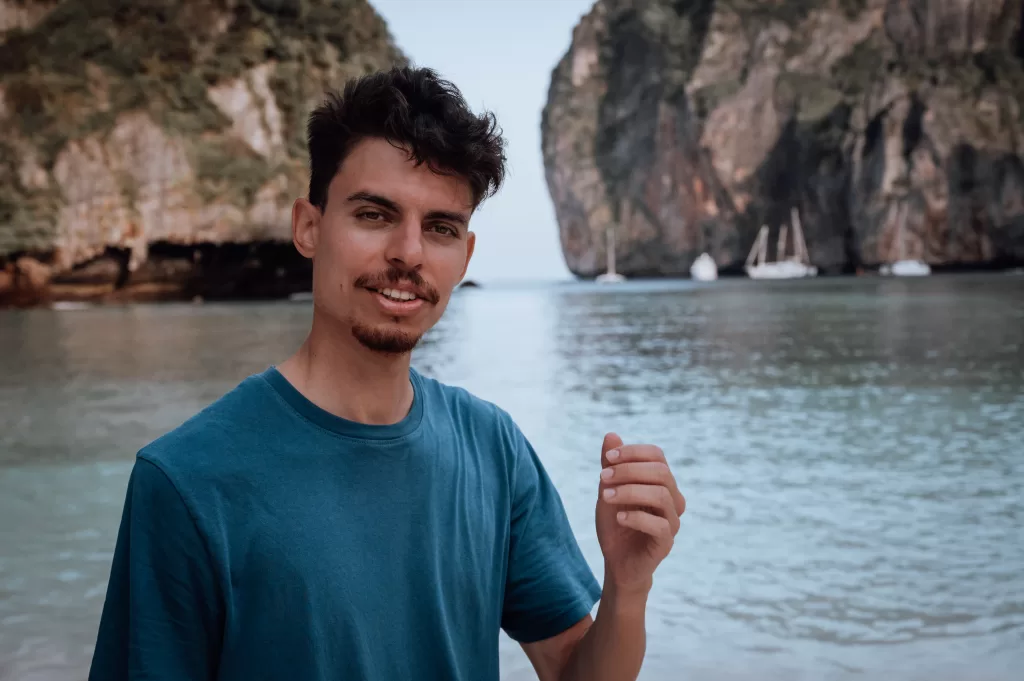
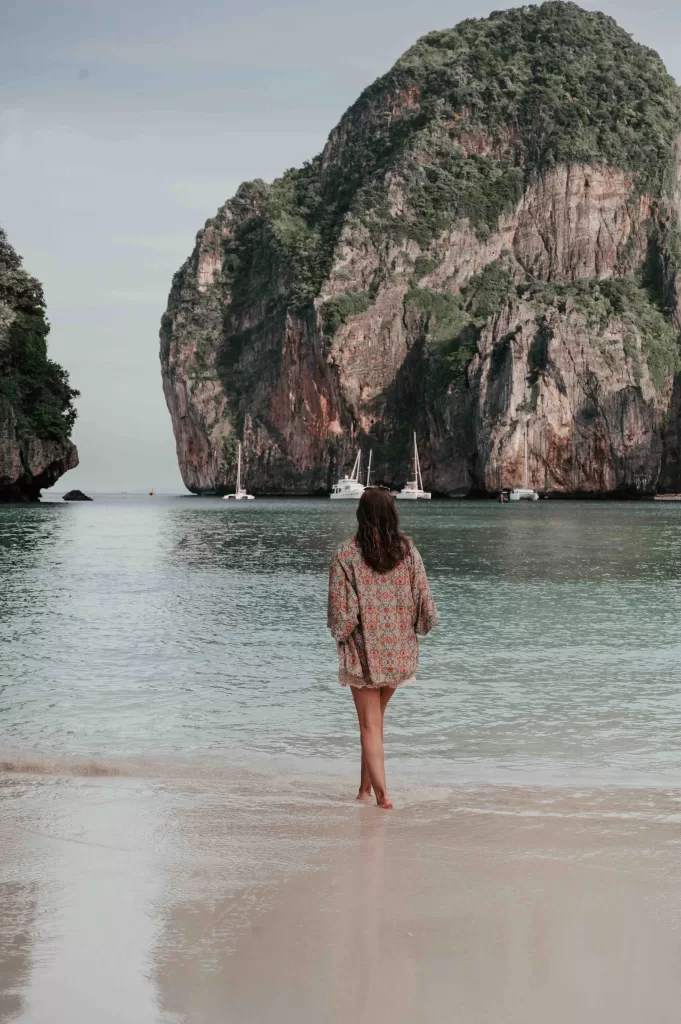
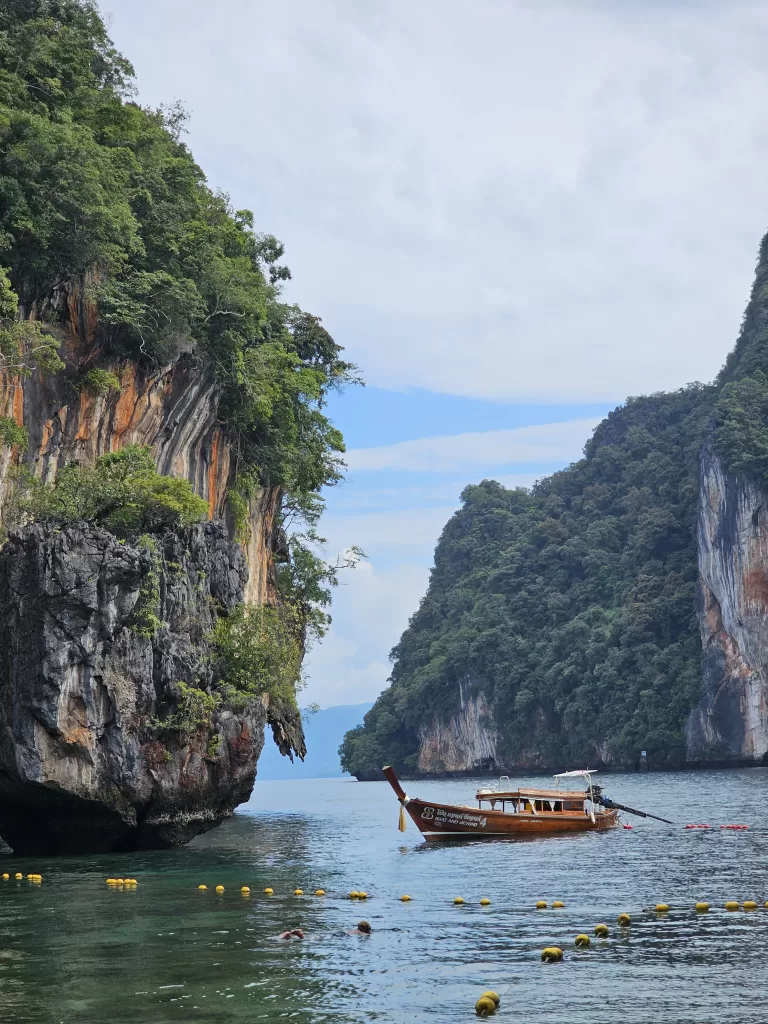
Day 11: Koh Hong and Koh Yao Noi
Koh Yao Noi is also close to the beautiful Koh Hong island! To visit this amazing place you can book a tour directly through your hotel, which we find easier and more convenient.
We have a detailed guide about the island, so if you are curious and want to learn more check our Ko Hong Guide!
After doing some island hopping we took the time to explore a bit of Koh Yao Noi and relax at the beach.
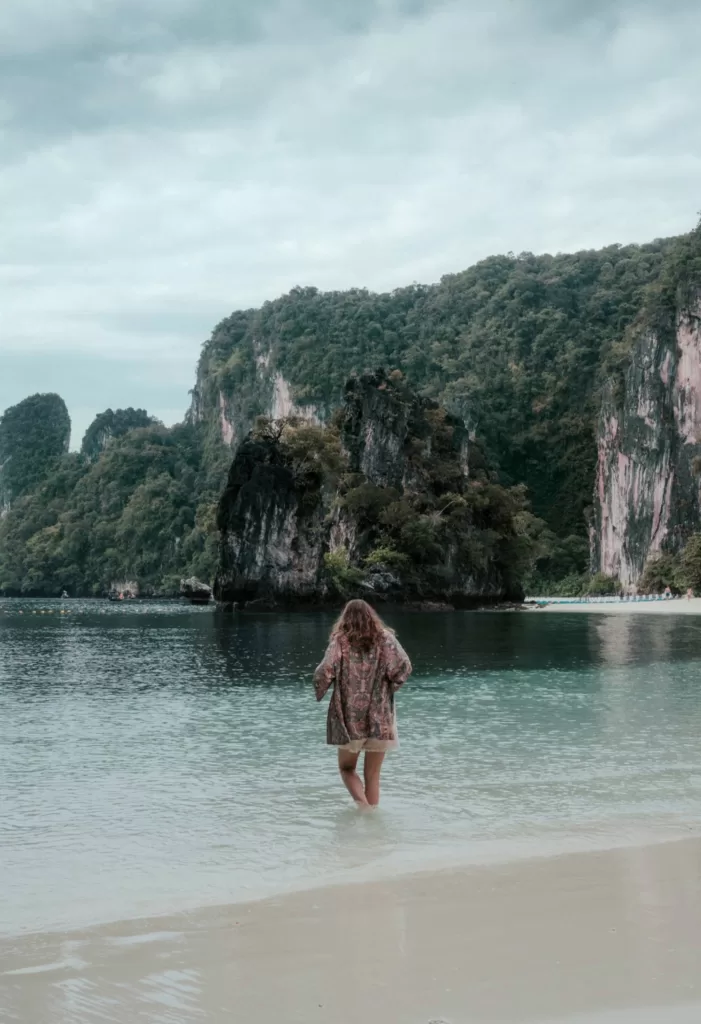
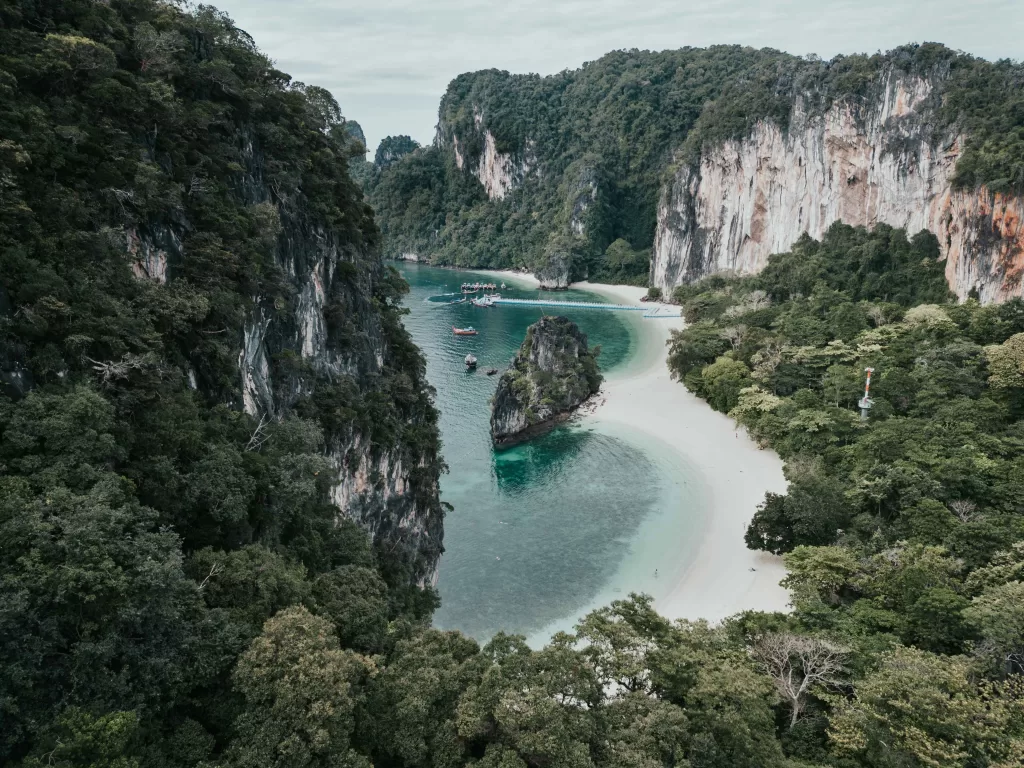
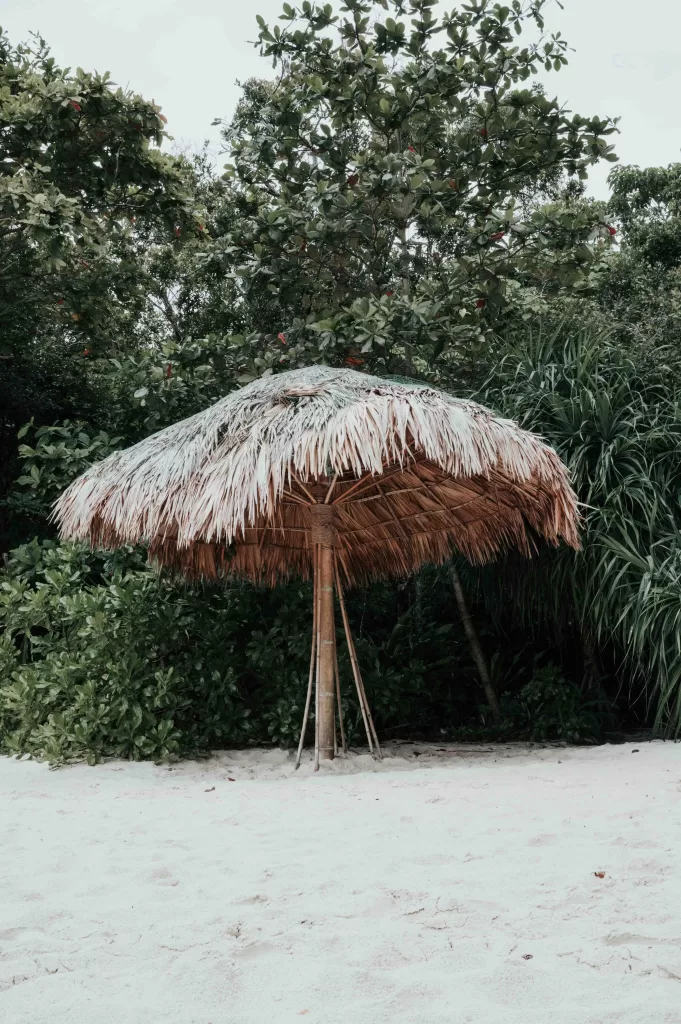
Day 12-13: Enjoying a Private Island (optional, for the 10 day itinerary)
We like to think about ourselves as mid-budget travelers. We spend a few nights in a cabin in the middle of the jungle, but we also like to splurge a bit by the end of our trip and stay at fancier hotels.
After doing some research, we found this island called Naka. On the island, there is just a hotel and a small community of local people, which means you’ll have a private beach with an incredible view over the Phang Nga Bay.
As soon as you arrive you are greeted by the welcoming staff and are asked to hit two times on a gong and ask for a wish. According to ancient legends, a mythical dragon once roamed the Andaman Sea. Captivated by the beauty of the area that is now The Naka Island, with its stunning views of Phang Nga Bay and enchanting sunrises and sunsets, the dragon chose this spot as its final resting place.
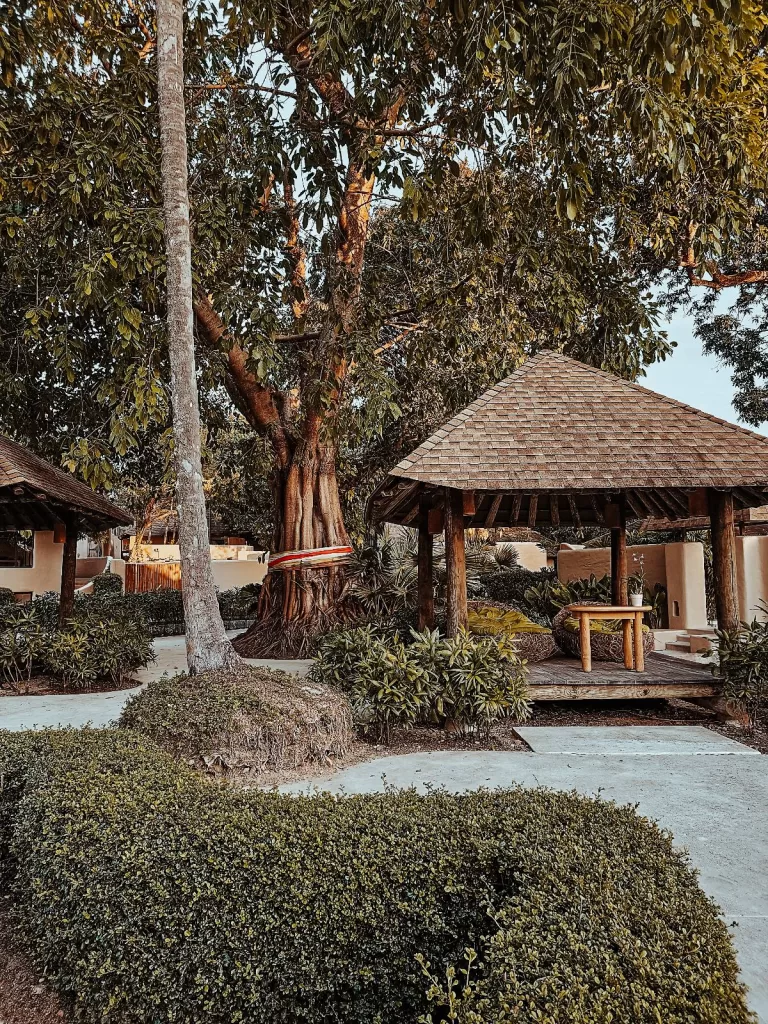
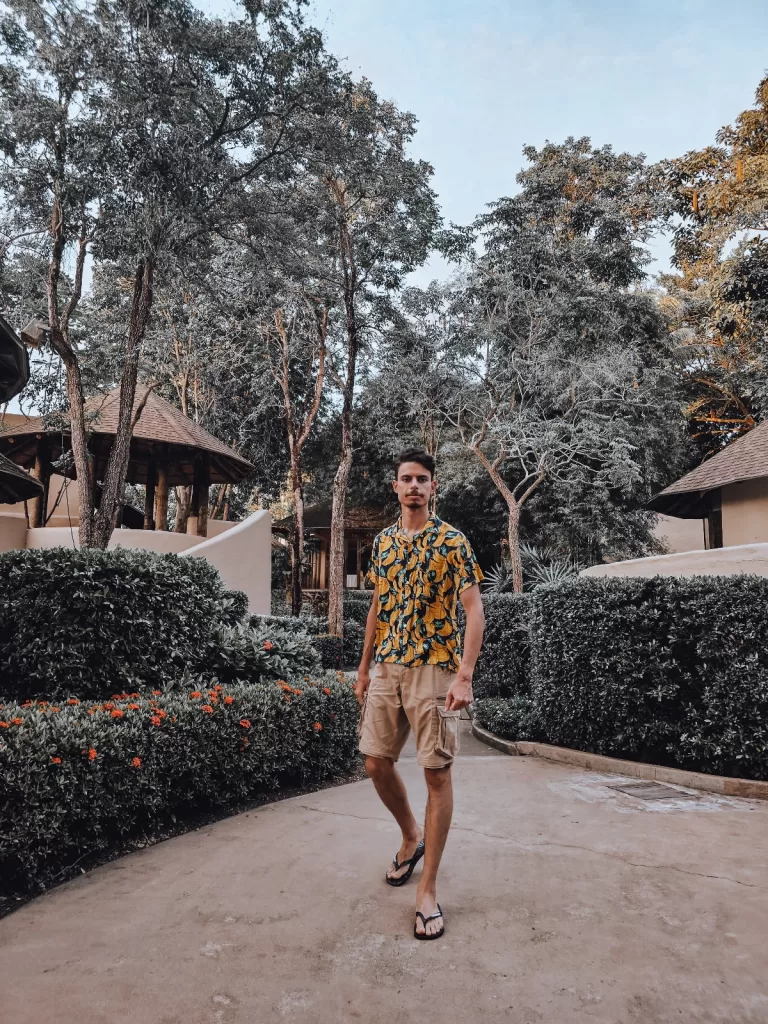
Story Time
Over time, the dragon transformed into an island of stone, rock, and sand, separating into three smaller islands: Koh Rad (the dragon’s head), Koh Naka Yai (the dragon’s body, which houses the resort), and Koh Naka Noi (the dragon’s tail). Embedded in Thai culture, gongs symbolize status and wealth, and ringing one is believed to bring good luck, health, and happiness. The Naka Island’s story incorporates the belief that the dragon’s spirit still resides here. Upon guests’ arrival, the resort’s special hammered-brass gong is struck twice – first to honor the dragon and seek his protection, and second to allow guests to make a wish for the dragon to help come true. As guests depart, the gong rings once more, ensuring a safe journey back and expressing gratitude to the dragon
We do our best to stay at hotels that take sustainability into account, and even though we feel the hotel we chose is not perfect, I just loved the note they left in guest rooms about the local wildlife. It not only provided an explanation, but also asked guests to respect the local fauna and not interact with them directly.
Day 14: Departure
It’s time to say goodbye, or better, see you soon to Thailand and head home or to your next destination.
When to Visit Thailand
The best time to visit Thailand varies across the regions. Thailand’s weather tends to be defined by three seasons: the wet season (May to October), the cool season (November to February) and the hot season (March to May). If you’re visiting the Gulf of Thailand, the best time is generally from April to October. For the rest of Thailand, the best time to visit is from November to March/April.
One piece of advice we’d like to share is not to rely too heavily on weather apps. When we traveled to Thailand in early December, the forecast predicted rain and thunderstorms almost daily. However, as you can see from our photos, we enjoyed plenty of sunshine and good weather. So, even if the forecast appears gloomy, don’t let it stress you out!
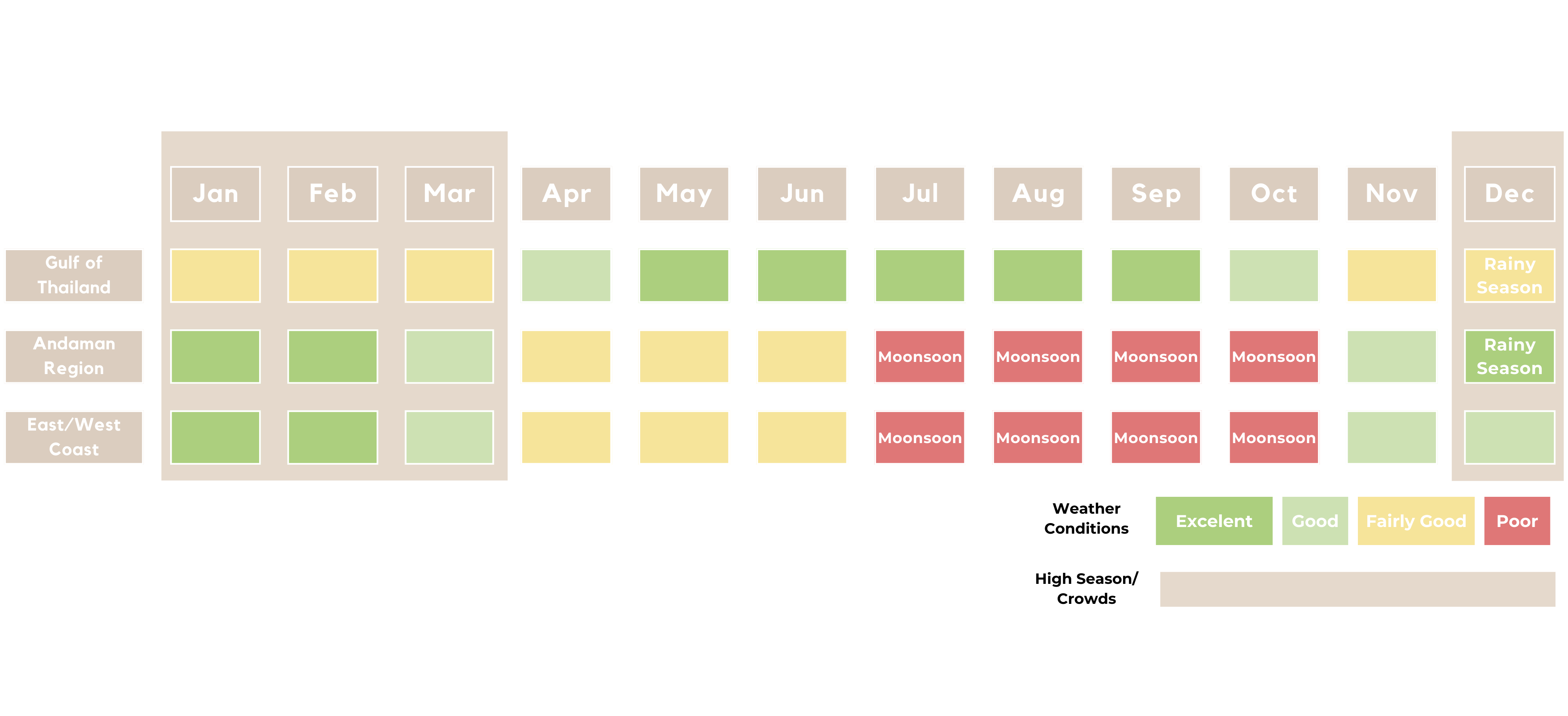
Entry Requirements: Visa
You will need to check this one, because it might depend on your nationality. To learn more check THAI E-VISA OFFICIAL WEBSITE.
Please contact us in case of any issues with the link.
How to get around in Thailand
You have a few options when it comes to travel in Thailand. Renting a motorbike is always an alternative to drive around the cities. We didn’t do it since we don’t have a lot of experience, so we decided to either use public transportation or hire a driver/tuk-tuk. If you don’t feel like bargaining, you can use Grab. We used it a lot during our trip and it worked great.
To travel to different locations you can either do it by plane, train or bus.
Practical Information
We want to share some additional information that will make your journey a better overall experience.
Safety, Travel Insurance and SIM Card
We felt safe all the time in Thailand. Of course you need to be careful with petty crime and scams, but that is a reality in every single country you visit. If you’re driving around yourself, you really need to be extra careful since traffic is a bit of a chaos. We didn’t see any accidents during our time, but we have to recognize that it can be a bit dangerous.
When traveling, you should definitely have travel insurance. We have been using IATI for our travels and depending on what we’re doing, we might choose different insurance options.
As for the SIM card, you have always the option to buy a physical one, but this time we tried to go with an E-SIM alternative.
If you want to avoid buying physical ones, nowadays there are many options of E-SIM cards that you can buy in advance or activate upon arrival.
We mostly use Airalo.
Medical Precautions
Before visiting Thailand, a visit to your doctor’s office is for sure a recommendation. Below are just recommendations based on the opinion of the medical professionals we consulted, we have no credentials to provide medical guidance, it’s always recommended to seek it on your own.
Drinking water and food: Avoid drinking water from the tap. We also avoided brushing our teeth with tap water.
Avoid having drinks with ice on them, if possible. Is most cases the ice will be ok, but be mindful of this.
As for food the food, you should experience the food culture of Thailand (which is amazing), but be mindful of the places where you are eating. Check for reviews and if eating street food, always go for the ones who have more people, since it means the food won’t be sitting there.
ATMs, Money and Negotiating Prices
The currency in Thailand is the Baht. You can find ATMs around cities and it’s always advisable to carry cash with you, since you might need it to pay your entry fees to some of the monuments. If you withdraw money from a monk and show your passport, you might be able to not pay the extra fee.
Bargaining in Thailand is common, so feel free to experience this cultural exchange. But always be mindful and respectful when doing so.
